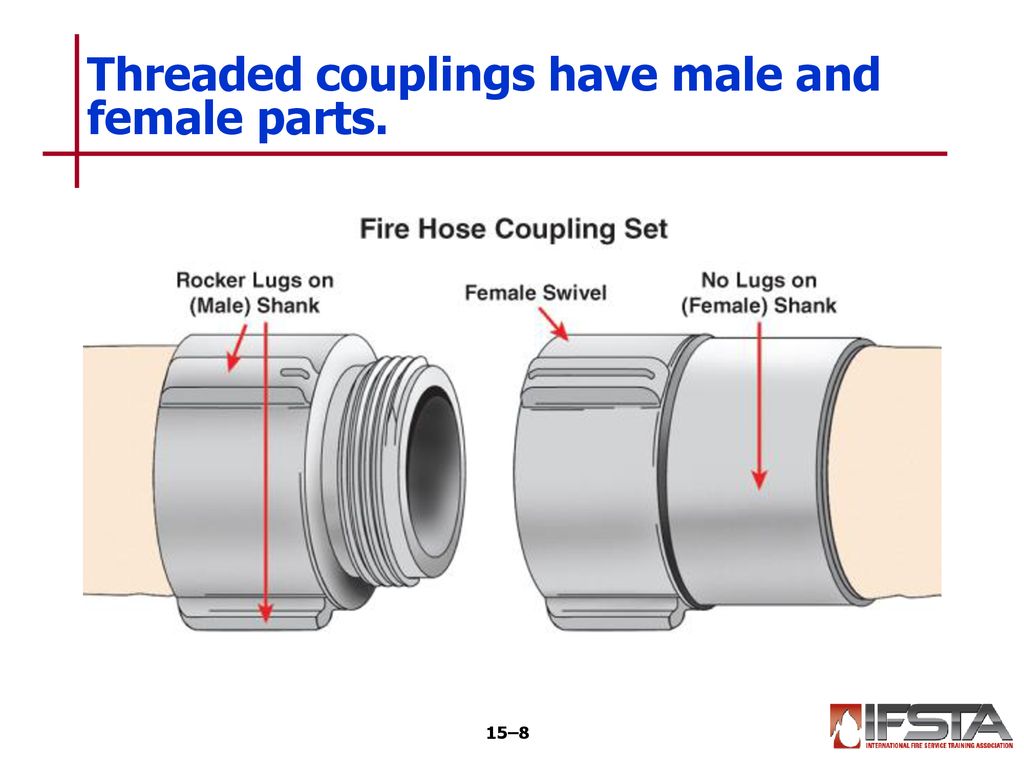FIRE HOSES, NOZZLES AND COUPLINGS
Regulations
As per SOLAS II-2/10;
All fire hoses must be at least 10 m in length but maximum length is not more than as follows:
- 15 m in machinery spaces,
- 20 m in other spaces on deck,
- 25 m for open decks on ships with a maximum breadth in excess of 30 m.
 |
| A sample of minimum no. of fire hose distribution on deck of a ship which is more than 1000 GRT, not engaged in carrying dagerous goods. |
This number does not include any hoses required in any engine or boiler room. The Administration may increase the number of hoses required so as to ensure that hoses in sufficient number are available and accessible at all times, having regard to the type of ship and the nature of trade in which the ship is employed.
Ships carrying dangerous goods shall be provided with 3 hoses and nozzles, in addition to those required above;
of less than 1,000 gross tonnage, the number of fire hoses to be provided shall be the same requirement with above except, in no case less than three in all.
Standard nozzle sizes shall be 12 mm, 16 mm and 19 mm or as near thereto as possible. Larger diameter nozzles may be permitted at the discretion of the Administration.
For accommodation and service spaces, a nozzle size greater than 12 mm need not be used.
For machinery spaces and exterior locations, the nozzle size shall be such as to obtain the maximum discharge possible from two jets at the pressure required from the smallest pump, provided that a nozzle size greater than 19 mm need not be used.
Nozzles shall be of an approved dual-purpose type (i.e., spray/jet type) incorporating a shutoff.
What are fire hoses made of?
Each fire hose consists of a rubber liner in which the water is carried. However, it cannot witstand the high pressure nor provide resistance to weathering. So that the liner is covered over by single or double jackets made of fabric or rubber.Rubber Jacket Fire Hose
Rubber fire hoses provide extra resistance to chemicals and abrasion. They do not absorb water so that they can be stored when wet. They are also easy to clean. However, they are not good at flexibility when comprared to the fabric hoses. The rubber generally are made out of syntetic nitrile rubber.
 |
| Liner covered by jaket(s) Source: https://firehosedirect.com/blogs/expert-help/introduction-to-fire-hoses |
Fabric Single/Double Jacket Fire Hose
These hoses are made up of polyester or nylon yarns forming jacket out of interior rubber.
If there is one coat over the interior rubber, it is called ''single jacket''; if there are two coats over the interior rubber, it is called ''double jacket''.
Fire hose color gives additional durability as compared to the white fire hose of the same type because pigments in the color show more resistance to UV radiations.
Fire Hose Repair
If the fire hose breaks at some place, we have to repair it on board. Please be sure that, the length of the fire hose after reapir will be more than 10 m as per SOLAS requirements.
Please see the video below for tutorial.
Fire Hose Couplings
Fire hose couplings are defined by three criterias; material, thread and gender.
- Fire Hose Coupling Material
 |
| Source: https://www.storz-coupling.com/images/storz-fire-fighting-coupling.jpg |
Aluminum is lighter and resistant to corrosion. However, aluminum is very vulnurable to scratches. Also it is more likely to wear and get damaged due to its lightweight. For these reasons, aluminum is generally allayed with zinc or copper to be stronger.
Brass, on the other hand, is the allow of copper and zinc. It is strong and resistant to corrosion.
2. Fire Hose Coupling Thread
There are different standards in fire hose coupling threads. The most common types are NH/NST and NPT. Ensure that the couplings on board are all the same type for interchanging.
3. Fire Hose Coupling Gender
The coupling with thread outside is called ''male'' and the coupling with internal thread is called ''female''. The male coupling goes into the female coupling.
 |
| Source: https://slideplayer.com/slide/13726985/85/images/9/Threaded+couplings+have+male+and+female+parts..jpg |
With gendered type, there are female couplings on the hydrants and one female & one male couplings are fitted on fire hoses. So that the threads become vital as they must be compitable.
When it comes to sexless or genderless couplings, both female and male couplings are located at both end of the fire hose so that we can connect two size without considering male or female thread.
On board ships, genderless fire hose couplings are used such as Storz, Nakajima, Barceona.
Measurement of Fire Hose Coupling
Measurement of fire hose coupling is vital when requesting couplings.
 |
| Source: https://cdn.shopify.com/s/files/1/2313/3623/products/Storz-x-hosetail-line-drawing_1200x1200.png?v=1551761222 |
Basically, we just need to measure the lug distance and hose size as indicated above. Lug distance can be measured by a calipper. For hose size, please see the video below.
In the video above, male thread was measured. However, we know that male & female threads are connected each other when it comes to genderless coupling. So that just seperate male & female threads and measure outside diameter of the male thread or just measure the diameter of hose tail.



No comments:
Post a Comment